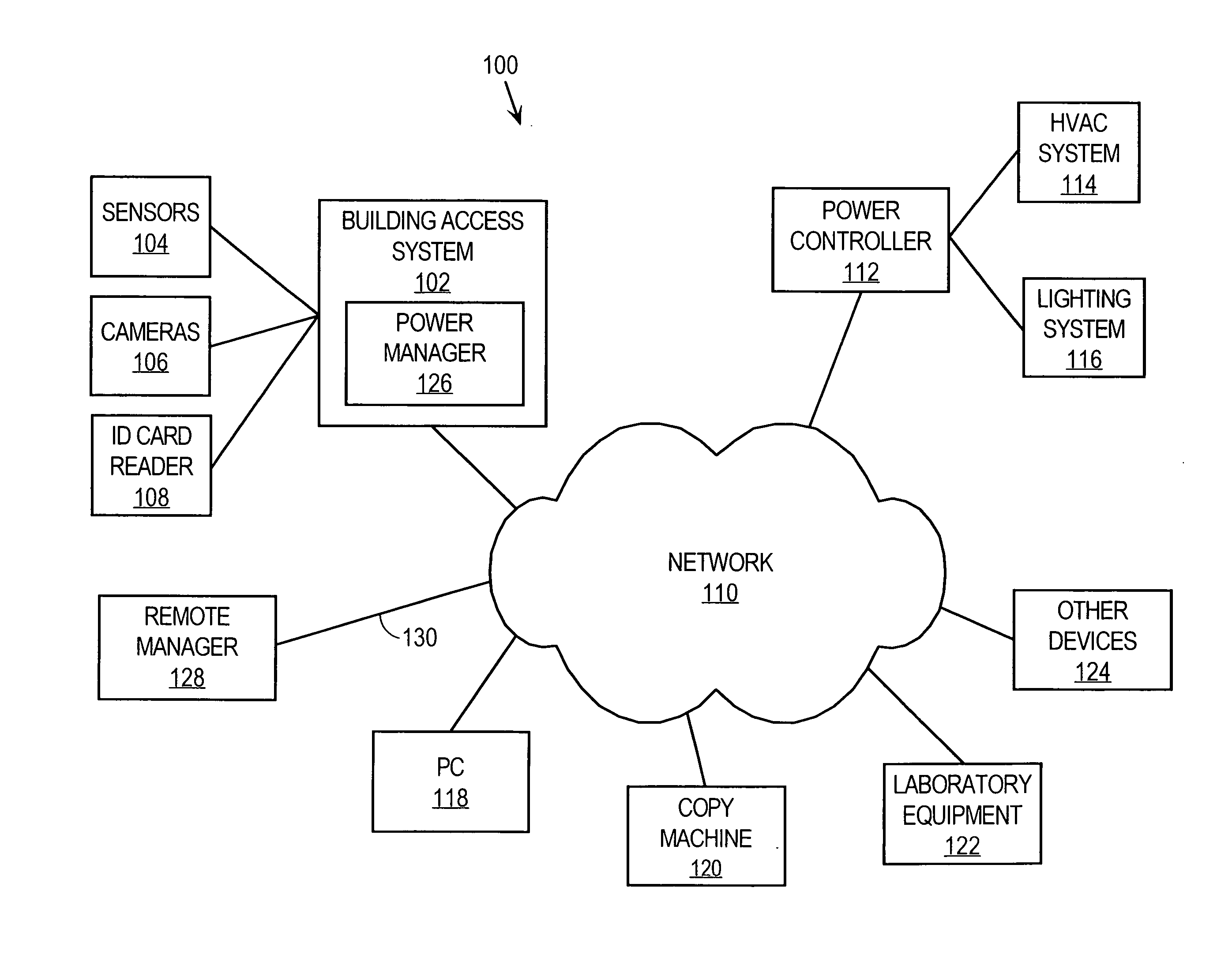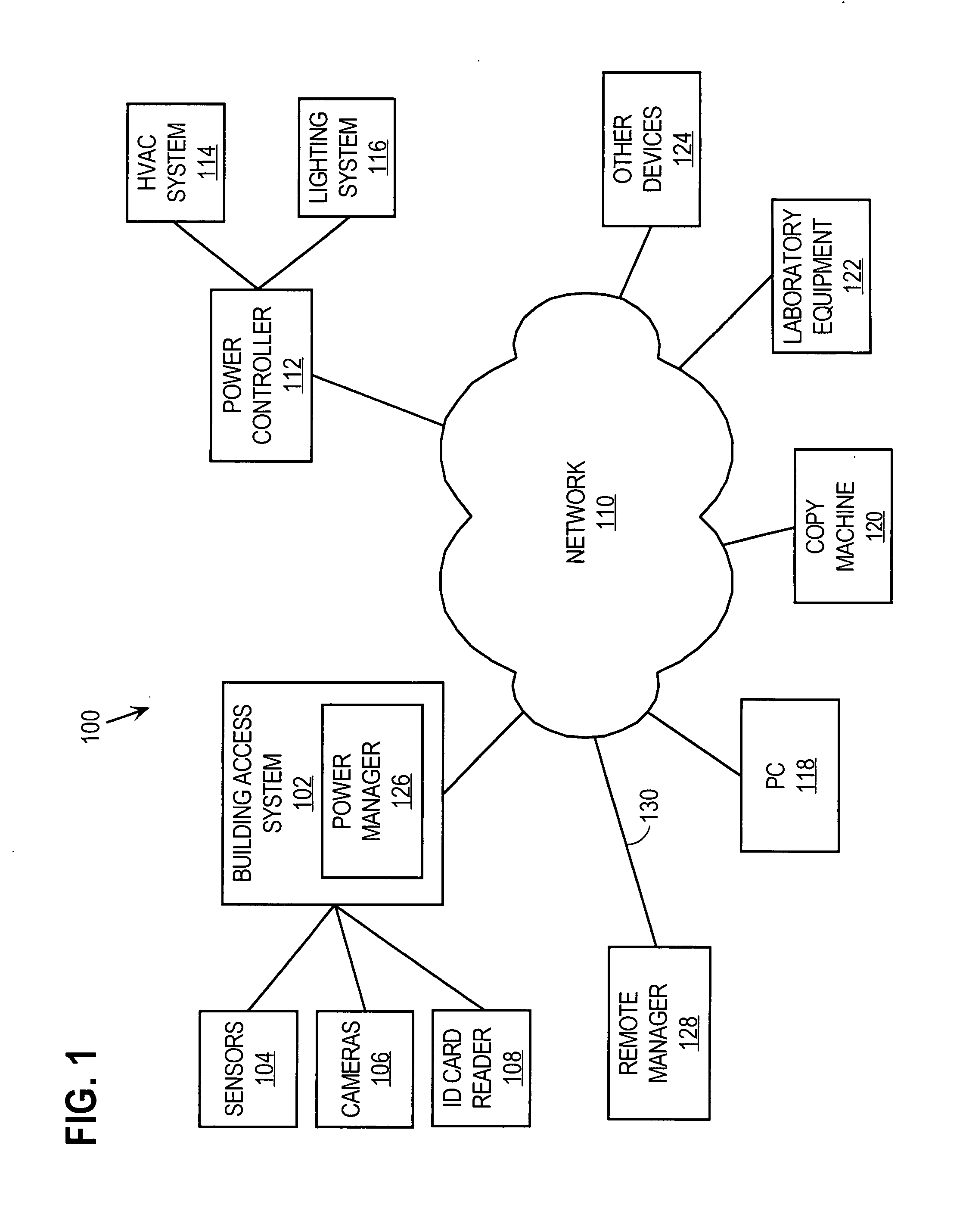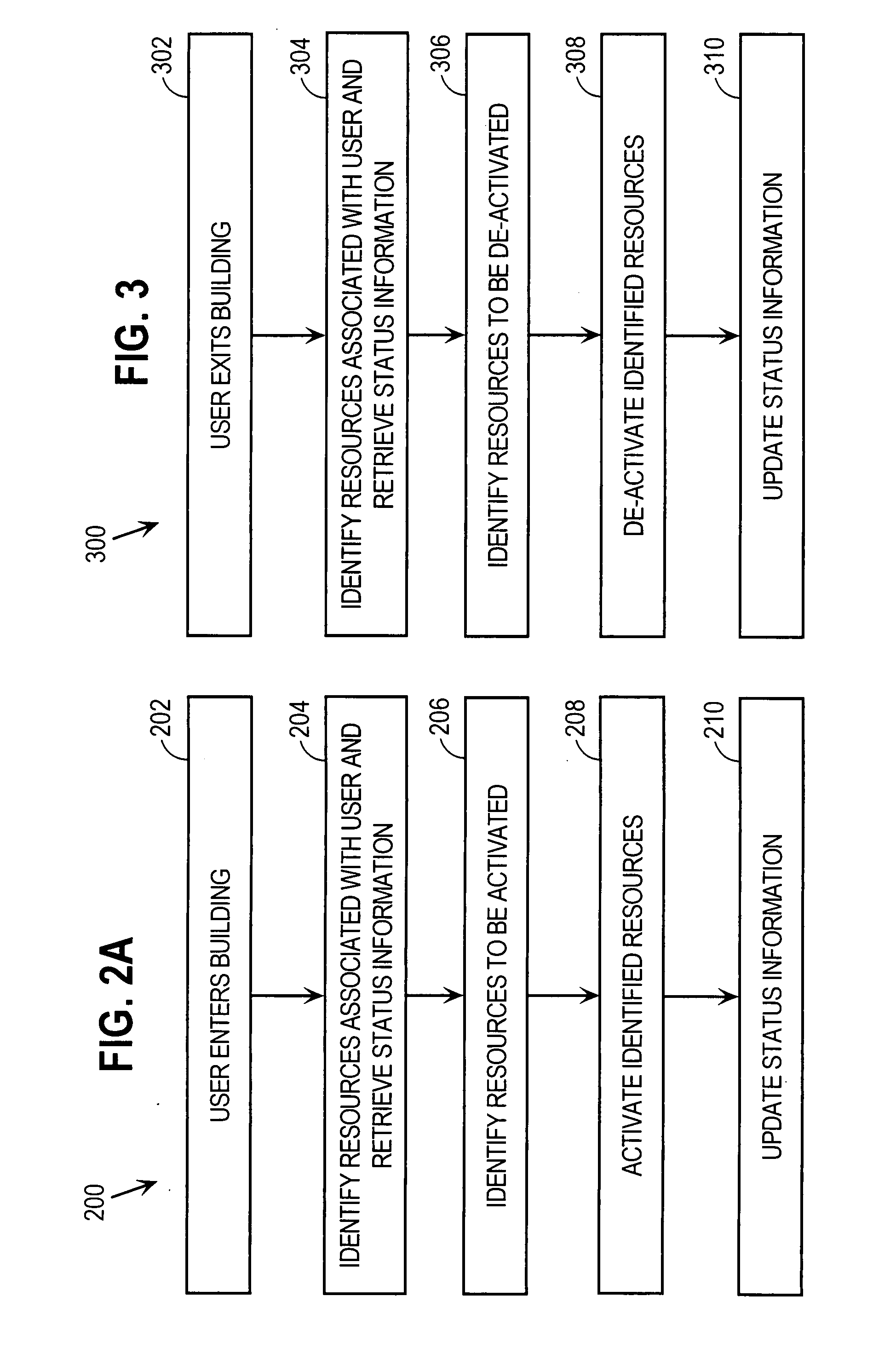Pre-activation of network devices
a network device and pre-activation technology, applied in the direction of liquid/fluent solid measurement, instruments, sustainable buildings, etc., can solve the problems of personal computers taking several minutes to “boot up”, reducing power consumption becomes an important issue, and types of equipment take a long time to power up from a powered down sta
- Summary
- Abstract
- Description
- Claims
- Application Information
AI Technical Summary
Benefits of technology
Problems solved by technology
Method used
Image
Examples
Embodiment Construction
[0028] In the following description, for the purposes of explanation, specific details are set forth in order to provide a thorough understanding of the invention. However, it will be apparent that the invention may be practiced without these specific details. In some instances, well-known structures and devices are depicted in block diagram form in order to avoid unnecessarily obscuring the invention. Various embodiments and aspects of the invention are described hereinafter in the following sections:
[0029] I. Overview
[0030] II. Power Management Architecture
[0031] III. Managing Power During Building Entry and Exit
[0032] IV. Implementation Mechanisms
[0033] V. Remote Management Applications
[0034] VI. Operational State Hierarchies
[0035] VII. Example Multi-Function Peripheral (MFP) Architecture
[0036] VIII. Network Device Pre-Activation [0037] A. Usage Data [0038] B. Collecting and Storing Usage Data [0039] C. Using Usage Data to Estimate Future Usage of a Network Device [0040] ...
PUM
 Login to View More
Login to View More Abstract
Description
Claims
Application Information
 Login to View More
Login to View More - R&D
- Intellectual Property
- Life Sciences
- Materials
- Tech Scout
- Unparalleled Data Quality
- Higher Quality Content
- 60% Fewer Hallucinations
Browse by: Latest US Patents, China's latest patents, Technical Efficacy Thesaurus, Application Domain, Technology Topic, Popular Technical Reports.
© 2025 PatSnap. All rights reserved.Legal|Privacy policy|Modern Slavery Act Transparency Statement|Sitemap|About US| Contact US: help@patsnap.com



